Today we commemorate the Greek Genocide victims of the Pontus region.
During the genocide, over a million Greeks were exterminated by Ottoman and Kemalist forces, 353,000 of them from Pontus alone.
However, the story of the Pontic Greeks is not only about their uproot from their homeland of nearly 3,000 years, but also their brave resistance and guerrilla warfare.
The Greeks of Pontus who managed to escape from the labour battalions or direct extermination, began to organise resistance against the genocidal Turks as early as 1915.
The idea was not only to escape the extermination and to defend themselves, but also to take revenge.
This is how the Pontic Greek guerrilla movement was created.

Initially, a small number of Greeks climbed the Pontic mountain and resisted with primitive weapons, such as axes and pitchforks.
With each new attack, guns were captured from the Turks.
As Turkish attacks and massacres increased against civilians, small guerrilla groups began to be reinforced by people fleeing or wanting to avenge the slaughter of their relatives.
The lawlessness and smuggling of weapons was widespread - this also helped the guerrillas acquire weapons too.
There was no single national centre to guide this whole movement and rather it was spontaneous and dispersed.
The resisting Greeks of Pontus were greatly aided by the Metropolitan of Amasya, Germanos Karavangelis, who had guerrilla experience from the Macedonian Struggle a few years earlier.
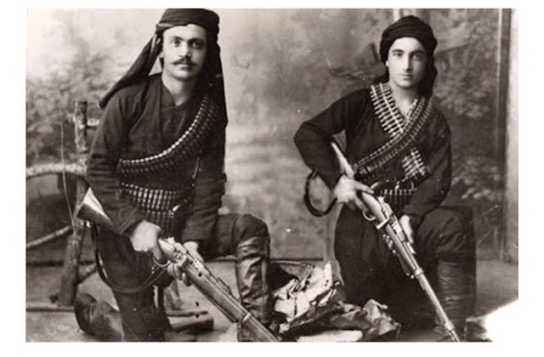
Soon, however, the leading figures of the Pontic Greek guerrillas emerged.
Charalambidis, Kontorakonidis, Tsaousidis and Vassilios Anthopoulos are just a very few.
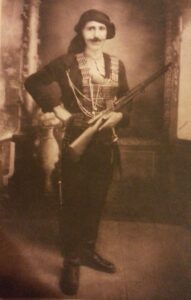
Large areas of Pontus was dominated by Efkleidis Kourtidis, particularly the villages of Sanda (Σάντα, Turkish: Dumanlı).
He fought hard to protect Greeks, and in one battle had to make the heart wrenching decision to kill seven children under his protection so the souls of another 300 Greeks could be saved.
He and the Greeks of Sanda were some of the last to go to Greece after the population exchange began in 1923 - they arrived in Greece in 1924.
His life came to a tragic end though, especially for one with a great warrior reputation - he fell out of his cart and was trampled on by his horses in 1934.
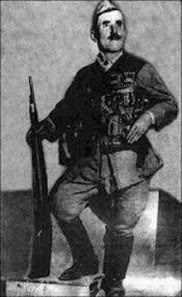
Another was Kotza Anastas (Anastasios Papadopoulos) who went down in history for his militancy.
This is why they gave him the nickname "Kolokotronis of Pontos".
His end was dramatic as he was betrayed for money after Turkish authorities put a bounty on him - he was killed by a relative to get the reward .
Anastas is known for having escaped the brutal Turkish Labour/Death Battalions before joining Captain Yakov's (Iakovou Karatelidis) guerrilla group.
He showed extraordinary bravery in battle and in all his fights against the Kemalist Turks, he never lost a battle.
Even after the Asia Minor Catastrophe in October 1922, he continued fighting bravely, winning battle after battle, until his assassination in December of that year.
Many guerrillas took their families with them to the mountains, and the women helped the guerrillas in every possible way, but mainly with delivering food and messages.
They were very strong and husky women because they lived at high altitudes and ate very clean food.
Many of the women also fought bravely.
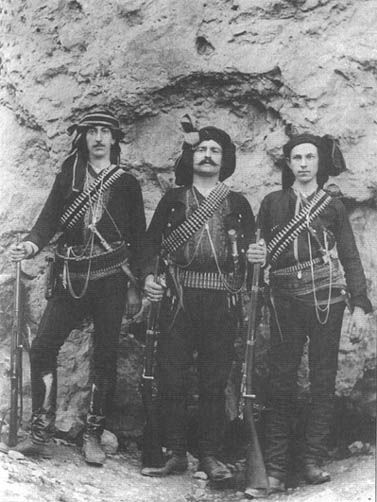 Captain Eleni was "the last rebel" who fought in the mountains.
Captain Eleni was "the last rebel" who fought in the mountains.
She fought all the way to 1924, a whole year after the population exchange occurred, when the Greeks were supposed to leave for Greece.
She was a mother who lost her son in front of her eyes and went to the mountains to continue the fight.
Despite the population exchange, she stayed behind and refused to leave her homeland.
Captain Pelagia was also a heroic figure.
His actions saved several thousand of Greeks in Pontus.
Sanda was known as the "Soul of the Pontus" as it was a major guerrilla stronghold, but also because it was never under direct Turkish occupation for hundreds of years.
The last atrocities against the Greeks of Pontus took place there.
Some atrocities by the Turks include the torture of women so they could testify the whereabouts of men fighting against the Kemalist Turks.
There is evidence that they even put cats in the women's underwear as a form of torture.
Despite these atrocities, the main slogan of the guerrillas was: "Let's rob the robbers".
The guerrillas organised themselves as they never received help from Greece.
The appeals of the Greeks of Pontus for Greece to send aid were not listened to.
The Pontic Greeks and the resistance remained helpless and excluded, but they continued to ambush Kemalist forces, robbed tax collectors, and saved civilians from massacre.
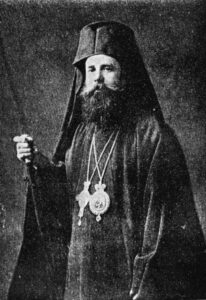
The Archbishop of Trapezounta, Chrysanthos, hurried to the Paris Peace Conference to speak with Greek Prime Minister Eleftherios Venizelos and to give him a more accurate picture on the sufferings of Pontic Hellenism.
Unfortunately he had other priorities and ignored the Pontic Greeks.
However, he did authorise the Archbishop to start contacts with Greek diplomats, informing them about the conditions of Pontic Greeks.
There were more than 18,000 guerrillas - the Turks say there were more than 25,000.
A significant part of the Turkish propaganda claims that the Pontic Greek guerrilla movement was an independence movement aimed at creating an independent state.
In practice, the Greek population created militias in order to protect their property and the lives of thousands of civilians
Today, Pontic Greeks immortalise the bravery of their forefathers through music and dance, accompanied with the famous lyre.
READ MORE: 10 Facts: Greek Genocide in Pontus.

